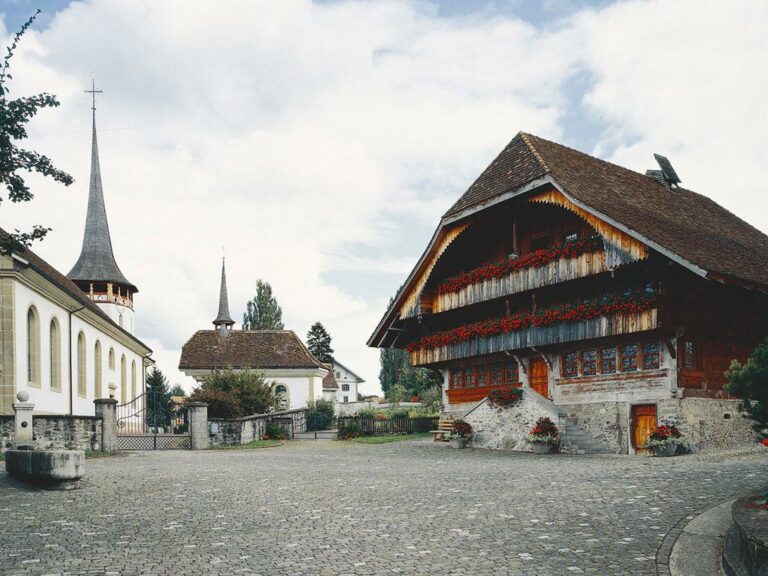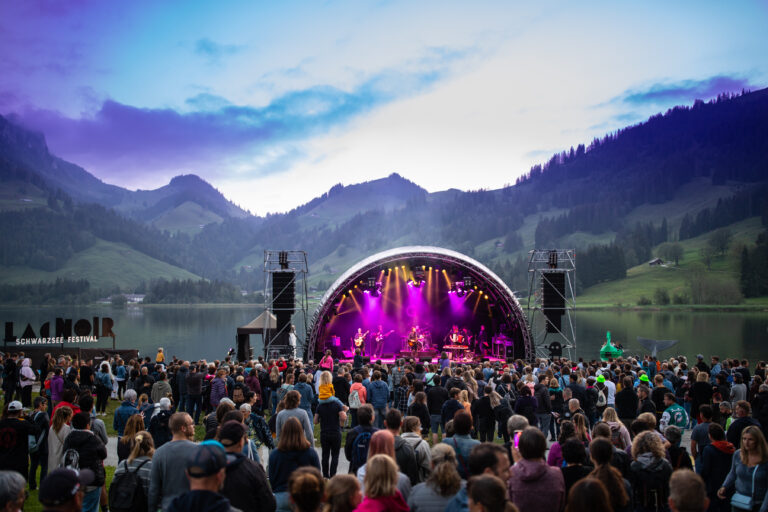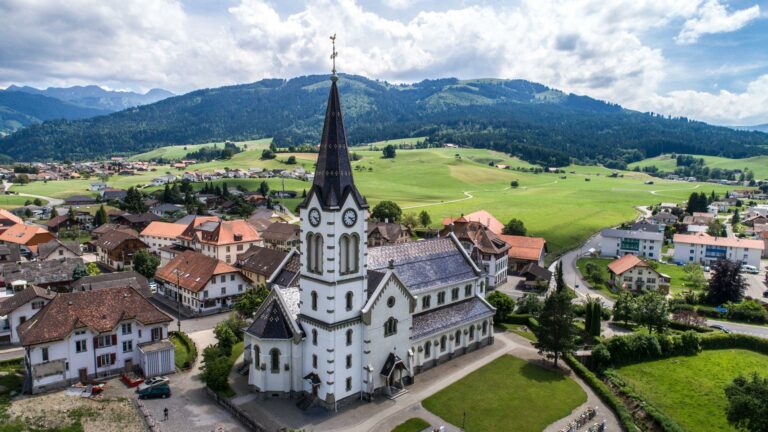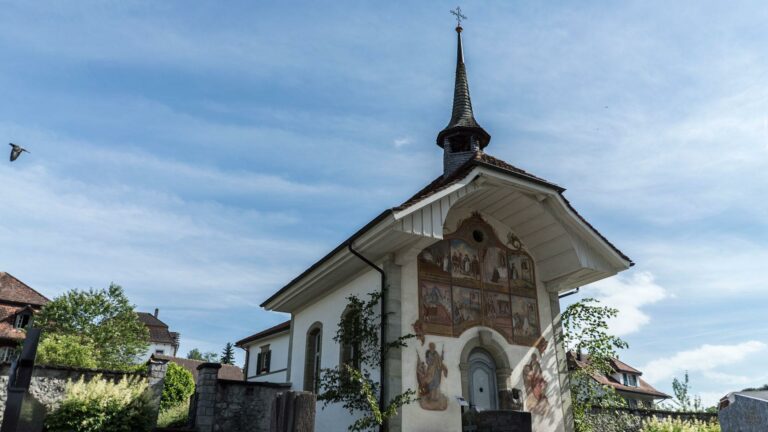The largest neo-Romanesque church in the canton was built following a terrible fire that destroyed nearly the entire village of Planfayon in 1906.
On the night of May 31st 1906, a violent fire fanned by strong winds destroyed the village of Planfayon: in two hours, 36 houses with thatched roofs were devastated and 274 people were homeless. The church was nothing more than embers and rubble, with the exception of one wall. The villagers quickly got to work, rebuilding a new village without the former narrow winding streets. The reconstruction of the church was carried out with the same enthusiasm, and it was inaugurated four years later.
The new building makes an impression with its imposing size and its colours. It is dedicated to the Birth of the Virgin Mary. The canopied high altar, in Italo-Byzantine style, is adorned with numerous representations of the life of Mary and depictions of saints. The vast nave, which seats over 100 worshippers, is bright: the high windows contain clear glass, while the lower ones are adorned with stained glass from the Berbig workshop in Zurich, depicting the apostles. The wooden ceiling is flat, divided into caissons whose intersections were painted by Oswald Pilloud, a pupil of Hodler. A new representation of the Annunciation adorns the central medallion.
A fine set of bells is installed in the bell tower. They were forged by a French-speaking craftsman, who made an error in his signature: he wrote "Plaffeyen" whereas the correct spelling is "Plaffeien"
Pfarreikirche Plaffeien
Kirchstrasse 1
1716 Plaffeien


















